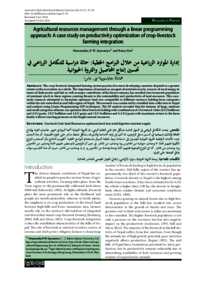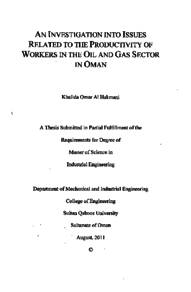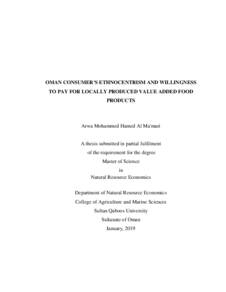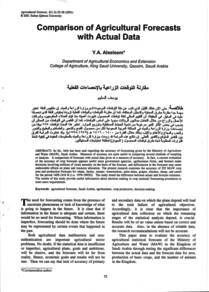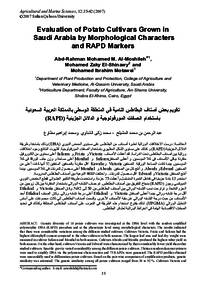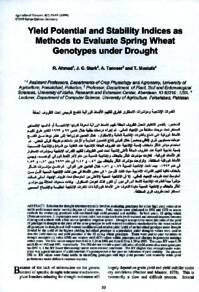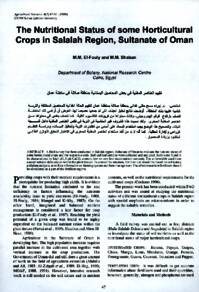Document
Agricultural resources management through a linear programming approach A case study on productivity optimization of crop-livestock farming integration.
Contributors
Das, Romy., Author
Publisher
جامعة السلطان قابوس. كلية العلوم الزراعية والبحرية
Gregorian
2017
Language
English
Subject
English abstract
The crop-livestock integrated farming system practiced in most developing countries depends to a greater extent on the ecosystem as a whole. The importance of animals as an agent of nutrient recycle, sources of rural energy in terms of draft power and fuel as well as major contributor of the farm economy, has resulted into increased population of ruminant stock in these regions creating threats to the sustainability and productivity of land resources. This case study research attempted to formulate optimum herd size compatible to different resource holding farm categories within the sub watershed in mid hills region of Nepal. The research was conducted by classified data collection in Nepal and analysis using Linear Programming (LP) techniques. The LP analysis revealed that the farmers of large, medium and small categories of farms can optimize their livestock holding with combination of 3 Livestock Units (LU) buffaloes and 4 LU goats, 2 LU buffaloes and 4 LU goats and 1 LU buffaloes and 4.4 LU goats with maximum return to the farm family without exerting pressure on the fragile natural resources.
Member of
ISSN
2410-1079
Resource URL
Citation
Jayasuriya, H. P. W., & Das, R. (2017). Agricultural resources management through a linear programming approach: A case study on productivity optimization of crop-livestock farming integration. Agricultural and Marian Sciences Journal, 22 (1), 27-35.
Arabic abstract
يعتمد التكامل الزراعي في الدول النامية بشكل عام على النظام البيئي، إن للثروة الحيوانية أهمية كبرة في تدوير مغذيات التربة وإنتاج الطاقة وكذلك إسهامها في تحسن دخل المزارعين، مما أدى إلى تزايد أعدادها والذي قد يشكل ضغط مباشر على الموارد الطبيعية. أن هذا البحث يحدد الأعداد التوافقية للثروة الحيوانية للوصول إلى استدامة بيئية لمنطقة النيبال باستخدام البرامج الخطية. أظهرت النتائج بأن أصحاب المزارع الكبيرة عليهم اتخاذ 3 وحدات حيوانية من الجاموس و 4 وحدات من الماعز. في حين أن المزارعين المتوسطين عليهم اتخاذ وحدتين من الجاموس و 4 وحدات من الماعز. أما في المزارع الصغيرة فعليهم اتخاذ وحدة واحدة من الجاموس و 4.4 وحدات من الماعز، حيث أن هذا التقسيم سوف يقلل الضغط على الموارد.
Category
Journal articles

